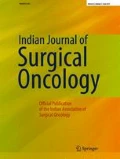
The first issue of this journal was placed before all of you in Jan 2010. From then, over the last decade, the journal has grown in terms of acceptance by the medical fraternity, the authorship across the globe and the quality of articles. This has given the editorial board immense pleasure and satisfaction.
The journey began in 2009 when I was asked to be the associate editor. I thought it was a huge responsibility and was a bit nervous to accept it. But with support of all the members, I was able to overcome the initial jitters and was on the job.
Initially, the articles we received were of poor quality. In addition, the authors were not accustomed to format the manuscript as per journal requirements. On one occasion, the author had just forwarded his power point presentation as a manuscript submission! As the years went by, the journal started attracting authors from across the globe. The rejection rates started increasing and manuscript submissions improved to a large extent. The current rejection rate is around 30% which is considered very well. Since a year and a half, case reports are not being accepted. This by itself indicates a big leap upward in terms of demand and quality of manuscripts.
Reviewer identification was a big challenge in the initial days. We then made the reviewers organ/system based. That ensured that articles of their area of interest only would be sent to them. Despite that, the reviewer turnaround time is still an issue, although it has been addressed to a large extent. We have also started rewarding reviewers.
With the National Medical Commission (formerly Medical Council of India) insisting on certain number of articles for promotions, the quality and number of submissions has increased. While large numbers of cancers is treated, most of the data in India is unpublished. Going forward, this trend of nudging the teachers to publish would help the journal garner more high quality manuscripts.
Over the years with the joint effort of the Editor in chief and the Publisher, the journal is indexed in many agencies notable amongst them being pubmed, scopus and Embase. Currently the Journal’s H-index is 16 and impact factor is 0.56. Over the last 5 years, downloads are more than 15,000 annually. Another feature which was introduced a couple of years ago by the publisher was ‘transfer desk’. If the manuscript was not found desirable for this journal, it would be transferred to the sister journal of the same publisher.
As I demit office, I go with a sense of satisfaction that the journal has moved ahead over the last decade. I have also seen the quality of manuscripts improve. I would like to place on record that over the last few years Dr. Arvind Kapali assisted me and handled most of the editorial process burden. He was a great help to me. The Editor in chief, Dr. Gopinath and I have always had a cordial relationship and that helped the Editorial process and the Journal to a large extent. I wish to thank all the authors for bearing with us when the turnaround times were prolonged and to all the reviewers who were our back bone.
As I cursorily went through all submissions, as I went through all reviewers’ views, it was a great learning on many fronts. I would know what is current, I would know how others’ view any submission, but most importantly I learnt a lot without reading any text book. I would definitely miss this knowledge update.
What gives me immense pleasure is that the baton is being handed over to Dr. Vijaykumar who is highly renowned and respected in the fraternity. I am very confident that during his tenure, the Journal would progress leaps and bounds. I wish him the very best.
The success of this journal is a credit to all of us who have contributed in multitude ways to make it happen. I suppose all of us in various capacities would do so to further the objective.
Thank you all.
Author information
Authors and Affiliations
Corresponding author
Additional information
Publisher's note
Springer Nature remains neutral with regard to jurisdictional claims in published maps and institutional affiliations.
Rights and permissions
About this article
Cite this article
Harish, K. A memorable journey and experience. Indian J Surg Oncol 12, 653–654 (2021). https://doi.org/10.1007/s13193-021-01489-0
Published:
Issue Date:
DOI: https://doi.org/10.1007/s13193-021-01489-0

